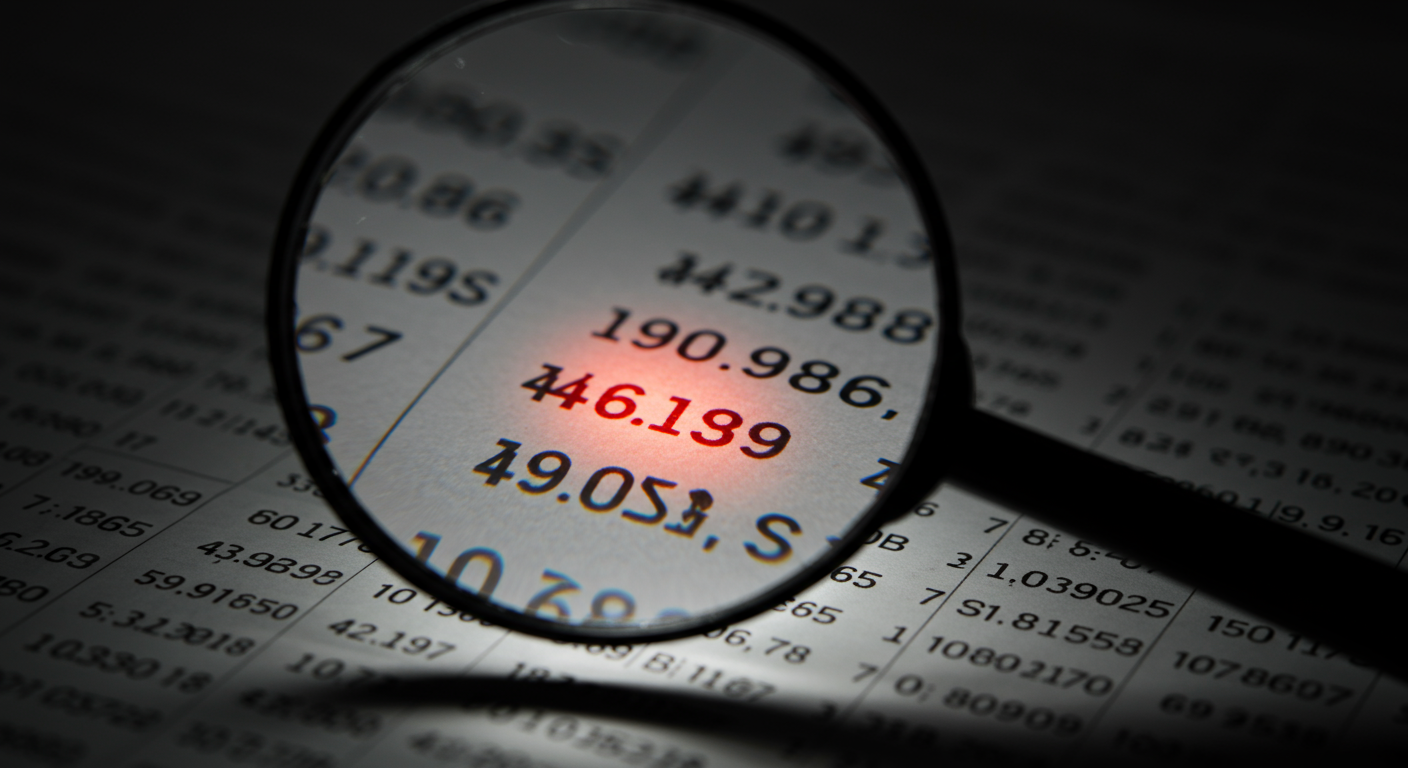Forensic Audits Explained: Detecting Financial Fraud in 2025
Ever watched a crime show where the sharp investigator pieces together tiny clues to solve a complex case? Think of a forensic audit as the financial world's equivalent. It’s not your everyday check-up; it’s a deep dive investigation specifically designed to uncover financial wrongdoing.
Financial fraud is unfortunately a persistent threat, and as we look towards 2025, the methods fraudsters use are becoming more sophisticated, often hidden within complex digital transactions. Regular audits might miss these cleverly disguised schemes. That's where the specialized skills of a forensic audit come into play. Ready to pull back the curtain on this crucial financial tool? Let's dive in!
What Exactly is a Forensic Audit?
Think of a standard financial audit like a routine health check. It aims to ensure your company's financial statements are generally accurate and comply with accounting standards – giving a "true and fair view."
A forensic audit, however, is more like calling in a specialist when you suspect a specific illness. It’s launched when there’s a reason to suspect fraud, misconduct, or other financial irregularities. Its primary goal isn't just accuracy, but actively seeking evidence of wrongdoing that could potentially be used in a court of law or legal proceeding. The term "forensic" itself means "suitable for use in a court of law."
Key differences include:
- Objective: Standard audits aim for compliance and accuracy assurance. Forensic audits aim to detect or confirm specific fraudulent activity.
- Scope: Standard audits often use sampling techniques. Forensic audits delve deep into specific areas of concern, examining 100% of transactions within that scope if necessary.
- Mindset: Standard auditors maintain professional skepticism. Forensic auditors approach the task with a more investigative mindset, actively looking for deception.
- Outcome: Standard audits result in an opinion on financial statements. Forensic audits result in a detailed report outlining findings, evidence, and potential perpetrators, often quantifying the financial loss.
Why Forensic Audits are More Critical Than Ever in 2025
The financial landscape is constantly evolving, and 2025 presents unique challenges and opportunities for both fraudsters and those trying to catch them. Here’s why forensic audits are becoming indispensable:
- Increasing Sophistication of Fraud: Digital transformation means more data, complex systems, and new avenues for cyber-enabled financial crime. Fraudsters leverage technology like AI, deepfakes, and sophisticated phishing schemes. Forensic audits need to keep pace.
- Big Data Challenges: Businesses generate vast amounts of data. Sifting through this manually is impossible. Forensic auditors increasingly rely on advanced data analytics tools to spot anomalies and red flags hidden within millions of transactions.
- Regulatory Pressure: Compliance requirements are tightening globally. Regulators expect businesses to have robust controls against fraud. A forensic audit can demonstrate due diligence and help meet these obligations.
- Globalization: Businesses operate across borders, involving complex international transactions and varying legal jurisdictions. Forensic audits help navigate this complexity when investigating potential cross-border fraud.
- Proactive Fraud Detection: Increasingly, companies aren't just waiting for fraud to happen. They're using forensic techniques proactively to identify vulnerabilities and deter potential wrongdoers before significant losses occur.
The Forensic Audit Process: A Step-by-Step Look
While each investigation is unique, a typical forensic audit follows a structured process:
- Planning the Investigation: This crucial first step involves understanding the allegations or suspicions, defining the scope and objectives of the audit, identifying potential areas of fraud, and developing an action plan. It’s about knowing what you’re looking for and where to look.
- Gathering Evidence: This is the core of the investigation. Forensic auditors collect evidence from various sources:
- Reviewing financial statements, ledgers, and supporting documents.
- Analyzing electronic data (emails, system logs, databases) – often involving digital forensics specialists.
- Conducting interviews with relevant personnel (these require specific interviewing techniques to gather information without tipping off potential suspects).
- Performing background checks.
- Utilizing data analysis tools to identify suspicious patterns or transactions.
- Analyzing the Evidence: Once evidence is gathered, the forensic auditor meticulously analyzes it. This involves connecting the dots, identifying inconsistencies, quantifying the financial impact of the fraud, and tracing illicit transactions. Techniques like flow charting funds or identifying phantom vendors might be used here.
- Reporting the Findings: The final step is to compile a comprehensive report detailing the findings, the evidence collected, the methodology used, and conclusions drawn. This report needs to be clear, concise, factual, and objective, suitable for presentation to management, legal counsel, courts, or regulatory bodies. The forensic auditor may also be required to provide expert testimony.
Common Areas Targeted by Forensic Audits
Forensic auditors are trained to look for various types of financial misconduct. Some common areas include:
- Asset Misappropriation: This is the most common type of fraud and includes:
- Skimming (taking cash before it's recorded)
- Larceny (taking cash after it's recorded)
- Fraudulent disbursements (e.g., fake invoices, ghost employees, expense reimbursement schemes)
- Misuse of company assets
- Financial Statement Fraud: Deliberately misrepresenting the company's financial position:
- Inflating revenues or assets
- Understating expenses or liabilities
- Improper disclosures
- Corruption: Wrongdoers using their influence in business transactions for personal gain:
- Bribery and kickbacks
- Conflicts of interest
- Extortion
- Cyber Fraud: Using technology to commit fraud:
- Data breaches leading to financial theft
- Business Email Compromise (BEC) scams
- Ransomware attacks impacting financial records
The Future is Tech-Driven: Forensic Audits in 2025
Technology is a double-edged sword. While fraudsters use it, forensic auditors leverage cutting-edge tools to stay ahead:
- Advanced Data Analytics: AI and machine learning algorithms can analyze massive datasets far faster and more accurately than humans, spotting subtle anomalies indicative of fraud.
- Predictive Modeling: Using historical data to predict where fraud is most likely to occur, allowing for more targeted and proactive auditing.
- Blockchain Analysis: As cryptocurrency use grows, forensic auditors need tools to trace transactions on the blockchain to investigate illicit activities.
- Process Mining: Visualizing actual business processes based on system logs to identify deviations from standard procedures that might signal fraud or control weaknesses.
Beyond Detection: The Broader Benefits
Conducting a forensic audit offers advantages beyond simply catching a fraudster:
- Asset Recovery: Identifying and tracing stolen funds increases the chances of recovery.
- Strengthened Internal Controls: The investigation often highlights weaknesses in controls, allowing the company to implement improvements and prevent future occurrences.
- Deterrence: Taking decisive action sends a strong message that fraud will not be tolerated.
- Litigation Support: Provides credible evidence and expert testimony for legal proceedings.
- Reputational Management: Demonstrates to stakeholders that the company takes financial integrity seriously.
Protecting Your Financial Future
In the complex financial world of 2025, hoping for the best isn't a strategy. Financial fraud poses a significant risk to businesses of all sizes. While standard audits provide essential assurance, a forensic audit offers a specialized, investigative approach crucial for uncovering hidden financial crimes. It’s about digging deeper, following the money, and providing clarity when suspicion arises. By understanding the role and process of forensic auditing, businesses can better protect themselves against financial losses and reputational damage.
Is your business prepared to tackle the evolving challenges of financial fraud? Don't wait for irregularities to become major crises. Consider evaluating your internal controls and exploring how forensic accounting expertise can safeguard your company's financial health. Reach out to qualified professionals today to learn more about proactive fraud detection and investigation services.



